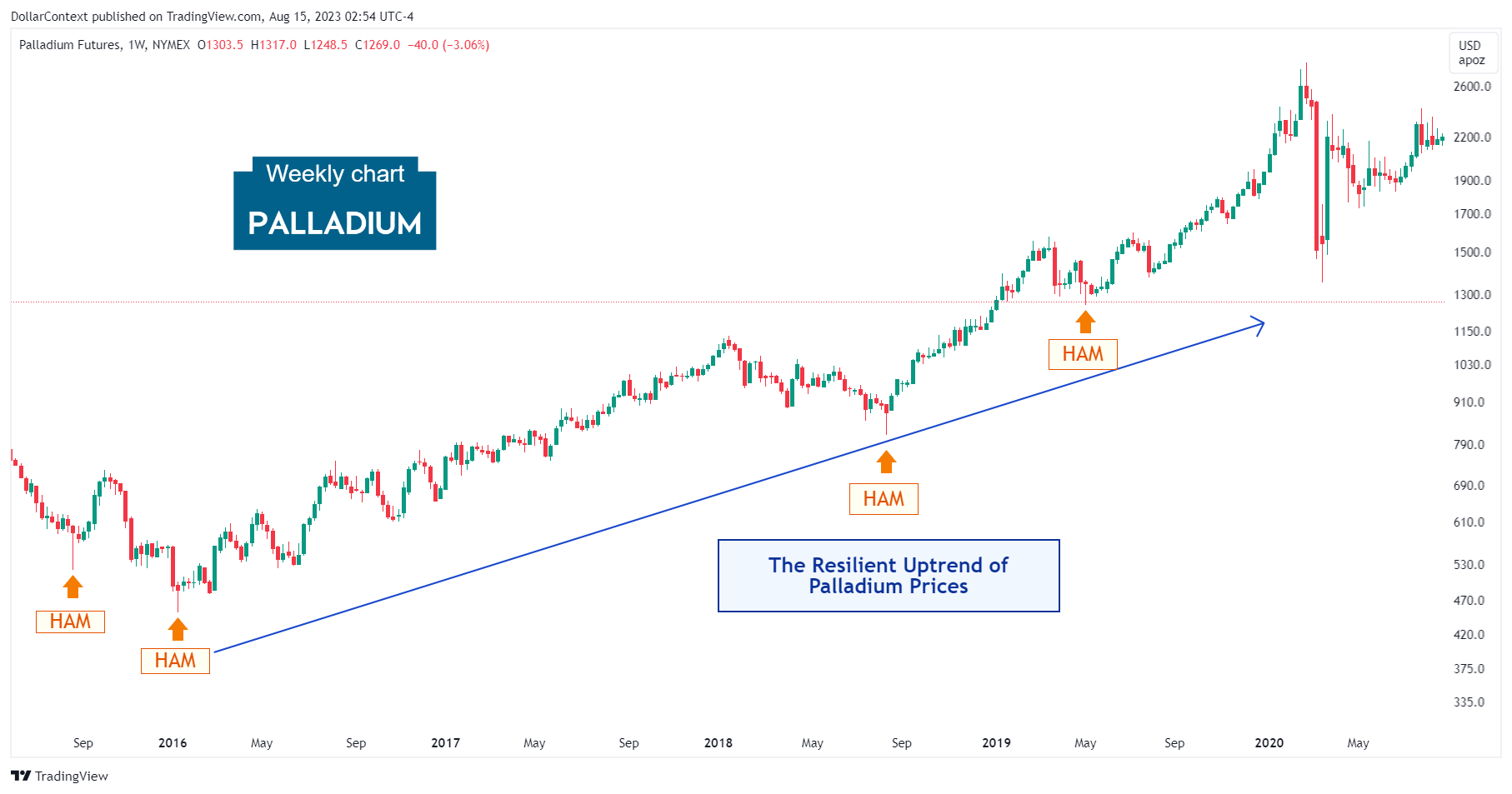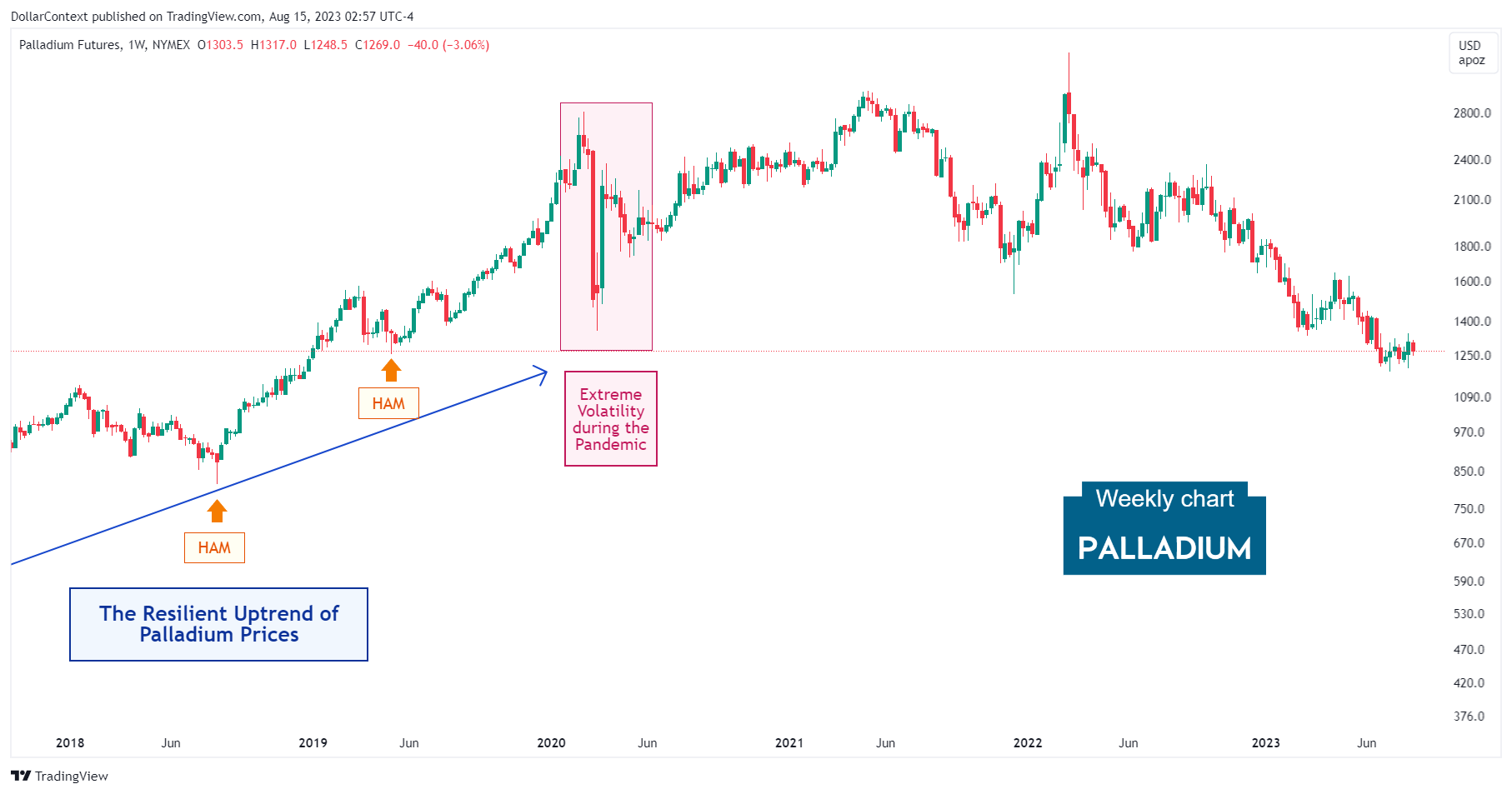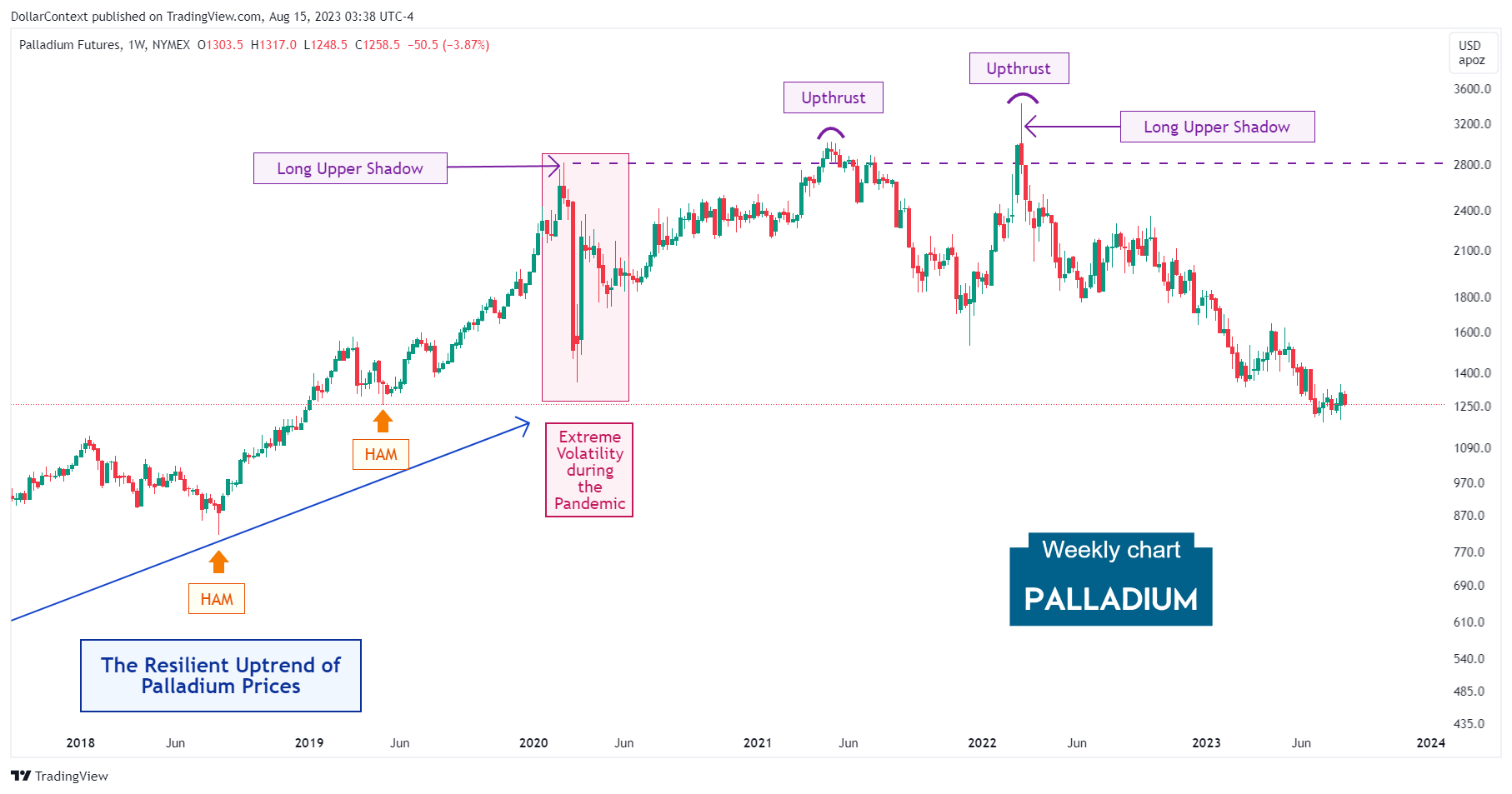Palladium Prices: Evolution and Outlook
We'll explore the drivers that have influenced palladium prices from 2016 onward. Then, we'll provide our perspectives on possible upcoming shifts in this market.

In this post, we'll explore the drivers and trends that have influenced palladium prices from 2016 onward. By the conclusion, we'll provide our perspectives on possible upcoming shifts in this market.
1. January 2016–February 2020: The Resilient Uptrend of Palladium Prices
A confluence of factors detailed below converged to create the perfect storm and drive the price of palladium to an increase of over 500 percent in less than five years:
- Tightening Emission Standards: As countries around the world increasingly clamped down on vehicle emissions, the demand for palladium rose. Palladium is a crucial component in gasoline-powered vehicles' catalytic converters, which are designed to reduce harmful emissions. Newer and stricter emission standards, especially in major markets like China and Europe, led to an increase in demand for these converters, which in turn drove up the demand for palladium.
- Shift from Diesel to Gasoline: In the wake of the Volkswagen diesel scandal in 2015, there was a noticeable shift in consumer preference from diesel to gasoline-powered vehicles, especially in Europe. Diesel vehicles predominantly use platinum in their catalytic converters, whereas gasoline vehicles use more palladium. This switch boosted the demand for palladium.
- Supply Constraints: The majority of palladium is mined in South Africa and Russia, two countries that experienced various supply disruptions during this period. South African mines, for instance, faced operational challenges and strikes. These issues added to concerns about the availability of the metal, further driving up prices.
- Limited Substitutability: While platinum can be used as a substitute for palladium in many industrial applications, it's not always a straight swap in catalytic converters due to efficiency and performance factors. This limited ability to substitute palladium with platinum meant that increased demand couldn't be easily mitigated, adding further upward pressure on prices.
- Stockpile Depletion: Over the years, suppliers used stockpiled palladium to fulfill contractual obligations when mining outputs were not sufficient. By the time we reached the period between 2015 and 2019, many of these stockpiles were considerably depleted, adding to the market's tightness.
From a technical perspective, it's noteworthy that within this uptrend, the lows of most corrections are characterized by a hammer pattern, which is marked as 'HAM' on the chart.

2. January 2020–May 2020: The Extreme Volatility during the Pandemic
During the first half of 2020, the palladium market, like many other markets, experienced significant volatility mainly induced by:
- Supply Disruptions: Supply chains for numerous industries, including mining and refining operations for palladium, were severely disrupted.
- Demand Fluctuations: The automobile industry faced significant challenges in the first half of 2020 due to the pandemic, with production halts and decreased consumer demand. However, there were expectations for stricter emissions standards in several countries, which was likely to boost demand for palladium in the longer term. These contrasting forces could have contributed to price volatility.
- Economic Stimulus: Governments around the world introduced significant economic stimulus measures in response to the pandemic. The influx of liquidity and low-interest rates not only boosted stock markets but also had complex effects on commodities, including palladium.
- Exchange Rate Fluctuations: Since palladium is priced in US dollars, fluctuations in the value of the dollar can have a significant impact on palladium prices. In 2020, there were significant fluctuations in the US currency, which likely contributed to volatility in the price of palladium.

3. From June 2020 Onward: Price Rejection Near the Highs
Following its initial recovery in March 2020, the palladium market made attempts to exceed previous highs on two separate occasions—in May 2021 and March 2022. In both instances, the market exhibited upthrusts (false breakouts of the previous highs), each of which was succeeded by substantial declines, with the second occurrence proving particularly significant. Note that the second upthrust includes a long upper shadow candle. Interestingly, the top back in February 2020 was characterized by a long upper shadow as well.

4. Outlook for Palladium in 2023 and 2024
In our view, when projecting the palladium price trend for 2023 and 2024, it is crucial to take the following elements into consideration:
- The Supercycle Theory: Beginning with the 2016–2020 timeframe, the commodity market appears to have potentially entered what is known as a supercycle. These cycles typically last for more than eight years and are characterized by significant increases in global commodity prices. Should this viewpoint prove accurate, palladium could be poised for a prolonged upward trend in the coming years.
- The Economic Slump Scenario: With the Federal Reserve's aggressive stance on increasing interest rates, coupled with alarming signals from key indicators such as the inverted yield curve, the prospect of an economic downturn around 2024 becomes increasingly plausible. In the early stages of a global recession, most commodities, including palladium, typically experience pricing pressures.





